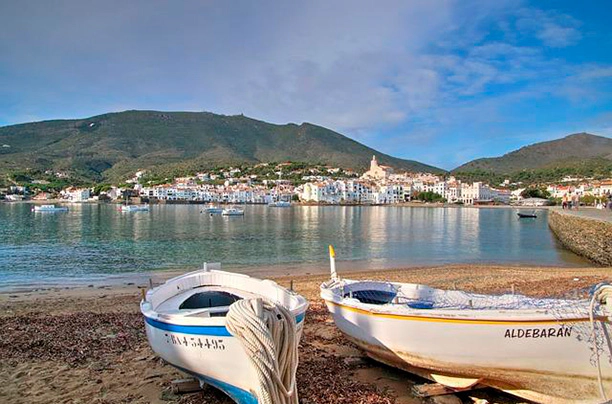Empordà
Whenever we talk about the Empordà region, we encounter people who speak wonders of the area, whether it's the Upper or Lower part. But do they really have a point? We provide you with an overview of the activities you can do, as well as a visit to its most emblematic villages, not forgetting its museums and gastronomy, and of course, its spectacular beaches.



ALT EMPORDÀ
It is a region located in the province of Girona. It borders to the north with France, to the east with the Mediterranean Sea, to the south with the regions of Baix Empordà, Gironès, Plà de l’Estany, and Garrotxa in Spain.
The region shares a border with France in the Pyrenees. Notable features include the Serra de l’Albera with Pic Neulós (1256m) and Serra de les Salines with Roc de Frausa (1421m) and Roc del Contador (1451m), the latter being the highest peak in Empordà. This sector of the axial Pyrenees separates the plain of Empordà from that of Rosselló.
Currently, El Pertús (between La Jonquera and El Voló) is the most frequently used passage. El Pertús sees the national road and the highway connecting Barcelona, Girona, and Figueres with Perpignan and the rest of France pass through. The railway runs along the coast, between Portbou and Cerbère.
Two main rivers flow through Alt Empordà: the Muga and the Fluvià. The Muga and the Fluvià flow into the bay of Roses, and the sediments they carry to the sea gradually build up the coastal plain.



Climate
The climate of the region is humid Mediterranean with marine influence. Precipitation varies significantly from the coast to the inland mountains.
In Empordà, and especially in Alt Empordà, the most characteristic element of the climate is the Tramontana wind. It is a dry and rather cold wind, blowing with great intensity, especially from November to March.
Economy
The economy of the region has historically been of a traditional rural character with crops such as olive, wheat, corn, and alfalfa, along with horticultural areas and fruit trees.
Fishing does not play as important a role as agriculture and livestock, although there are ports of great importance such as Roses, Port de la Selva, Llançà, and l’Escala.
Today, Alt Empordà is a highly touristic region, especially the Costa Brava. The beauty of its landscape, archaeological sites like Empúries or Roses, romantic old monasteries like the well-known Monastery of Sant Pere de Rodes, and medieval towns like Peralada or Castelló d’Empúries stand out. It's worth mentioning tourism related to the figure of Salvador Dalí, an artist whose work and life attract many visitors to Figueres, his hometown, and Cadaqués Portlligat, where his most famous residence was located.



BAIX EMPORDÀ
It is a Spanish region located in the province of Girona (Catalonia).
In 1936, during the first official territorial division of Catalonia, the division of Empordà into two administrative regions was approved. The boundary between the two parts was established along the imaginary line that runs through the Montgrí Massif and continues along the watershed of the Ter and Fluviá rivers.
It includes the municipalities between Montgrí, just north of where the waters of the Ter pass, and the sector of Les Gavarres and Vall d'Aro to the south. It has a total of 36 municipalities, covering a total area of 700.17 km². It is bordered to the north by Alt Empordà, to the west by Gironès, and to the south by La Selva.
Except for the areas of Les Gavarres, Montgrí, and Begur, the landscape is flat and homogeneous, with small hills hosting small villages around their church or castle. A large number of villas form small centers of attraction for markets and other services.
Within the mountains, the Montgrí Massif, isolated and crowned by a medieval castle, should be distinguished.
The Begur Massif, east of the Palafrugell corridor, with an altitude of 320m and also featuring the remains of a castle. The highest point in Baix Empordà is found in Les Gavarres with Puig d'Arques, reaching an altitude of 531m.
The coastline, the central part of the Costa Brava, is full of contrasts: dizzying cliffs at the northern and southern ends of the region with sheltered coves surrounded by pine trees, islands, and wetlands that provide refuge for fish and birds, as well as long beaches of fine sand.
Its main rivers are the Ter, Daró, Rissec, and Ridaura.



Climate
The climate of Baix Empordà is Mediterranean.
In Baix Empordà, three winds are noteworthy: the Tramontana, the Garbí, and the Levant.
Economy
Since the 1960s, the Costa Brava has witnessed a significant increase in the number of visitors, especially during the summer months, seeking sun and beach experiences.
The influx of tourists from all over Europe has brought about new habits, customs, and traditions, language learning, and more.



